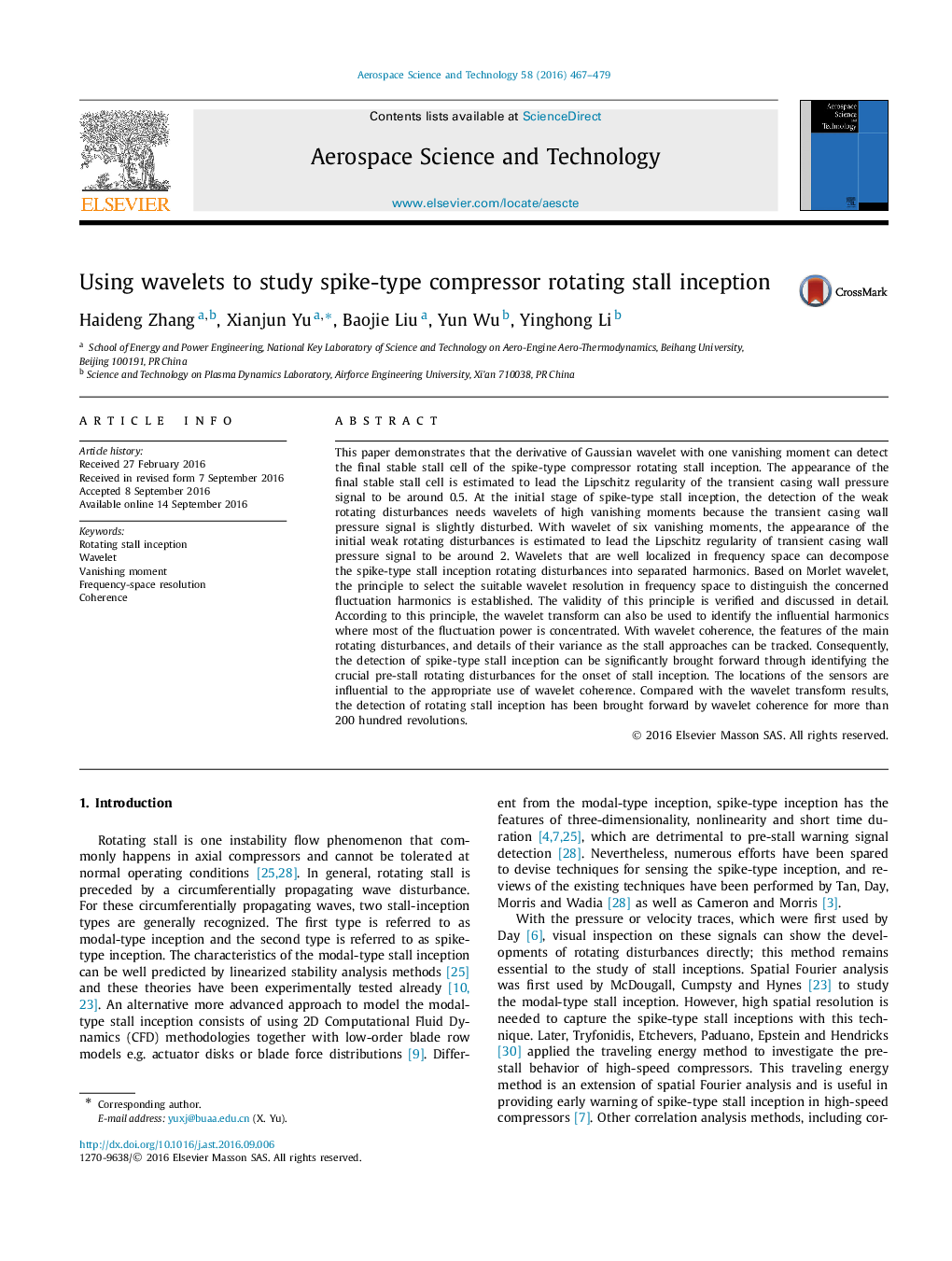| Article ID | Journal | Published Year | Pages | File Type |
|---|---|---|---|---|
| 8058497 | Aerospace Science and Technology | 2016 | 13 Pages |
Abstract
This paper demonstrates that the derivative of Gaussian wavelet with one vanishing moment can detect the final stable stall cell of the spike-type compressor rotating stall inception. The appearance of the final stable stall cell is estimated to lead the Lipschitz regularity of the transient casing wall pressure signal to be around 0.5. At the initial stage of spike-type stall inception, the detection of the weak rotating disturbances needs wavelets of high vanishing moments because the transient casing wall pressure signal is slightly disturbed. With wavelet of six vanishing moments, the appearance of the initial weak rotating disturbances is estimated to lead the Lipschitz regularity of transient casing wall pressure signal to be around 2. Wavelets that are well localized in frequency space can decompose the spike-type stall inception rotating disturbances into separated harmonics. Based on Morlet wavelet, the principle to select the suitable wavelet resolution in frequency space to distinguish the concerned fluctuation harmonics is established. The validity of this principle is verified and discussed in detail. According to this principle, the wavelet transform can also be used to identify the influential harmonics where most of the fluctuation power is concentrated. With wavelet coherence, the features of the main rotating disturbances, and details of their variance as the stall approaches can be tracked. Consequently, the detection of spike-type stall inception can be significantly brought forward through identifying the crucial pre-stall rotating disturbances for the onset of stall inception. The locations of the sensors are influential to the appropriate use of wavelet coherence. Compared with the wavelet transform results, the detection of rotating stall inception has been brought forward by wavelet coherence for more than 200 hundred revolutions.
Related Topics
Physical Sciences and Engineering
Engineering
Aerospace Engineering
Authors
Haideng Zhang, Xianjun Yu, Baojie Liu, Yun Wu, Yinghong Li,
